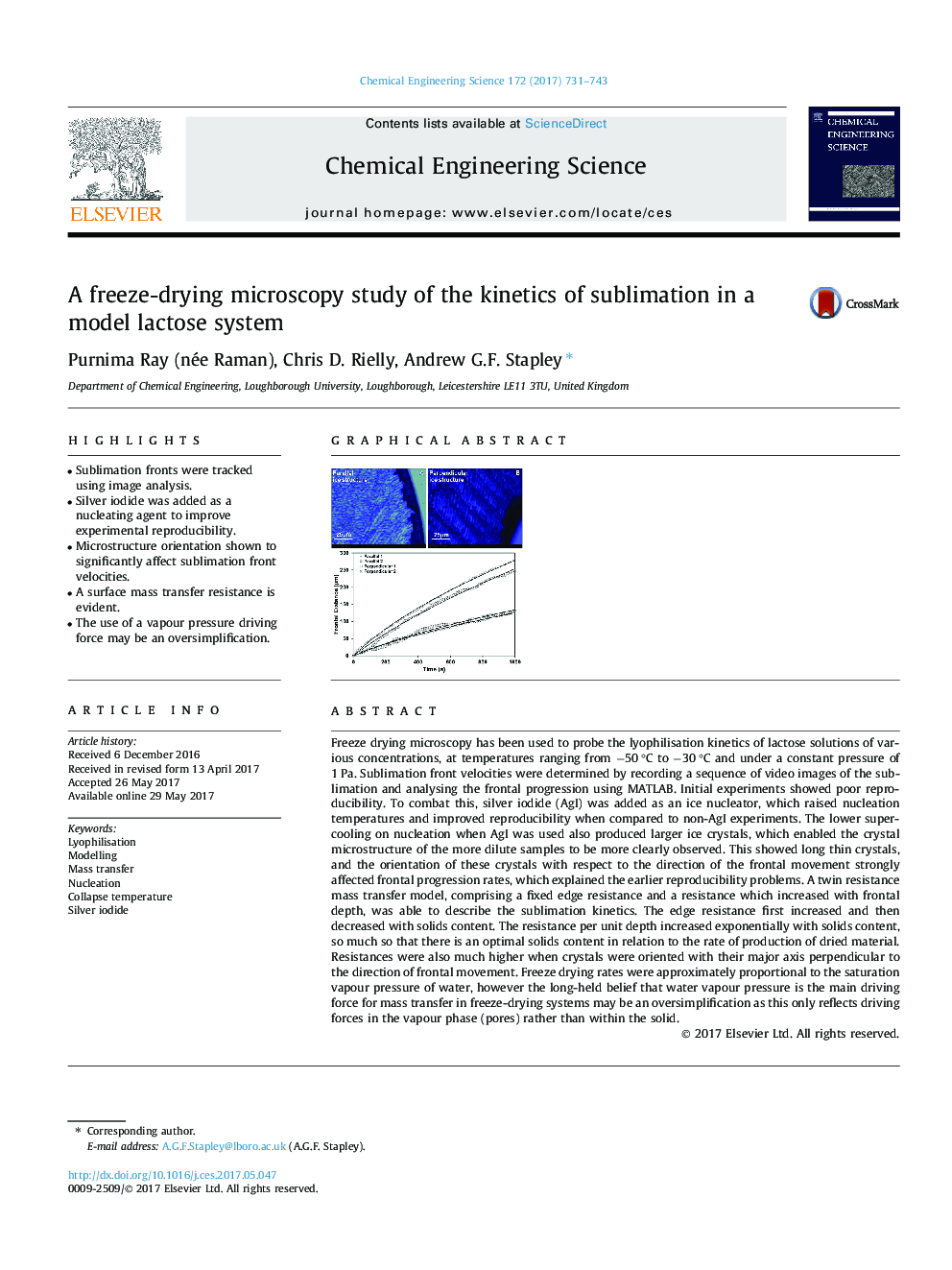| کد مقاله | کد نشریه | سال انتشار | مقاله انگلیسی | نسخه تمام متن |
|---|---|---|---|---|
| 6467065 | 1423247 | 2017 | 13 صفحه PDF | دانلود رایگان |
- Sublimation fronts were tracked using image analysis.
- Silver iodide was added as a nucleating agent to improve experimental reproducibility.
- Microstructure orientation shown to significantly affect sublimation front velocities.
- A surface mass transfer resistance is evident.
- The use of a vapour pressure driving force may be an oversimplification.
Freeze drying microscopy has been used to probe the lyophilisation kinetics of lactose solutions of various concentrations, at temperatures ranging from â50 °C to â30 °C and under a constant pressure of 1 Pa. Sublimation front velocities were determined by recording a sequence of video images of the sublimation and analysing the frontal progression using MATLAB. Initial experiments showed poor reproducibility. To combat this, silver iodide (AgI) was added as an ice nucleator, which raised nucleation temperatures and improved reproducibility when compared to non-AgI experiments. The lower supercooling on nucleation when AgI was used also produced larger ice crystals, which enabled the crystal microstructure of the more dilute samples to be more clearly observed. This showed long thin crystals, and the orientation of these crystals with respect to the direction of the frontal movement strongly affected frontal progression rates, which explained the earlier reproducibility problems. A twin resistance mass transfer model, comprising a fixed edge resistance and a resistance which increased with frontal depth, was able to describe the sublimation kinetics. The edge resistance first increased and then decreased with solids content. The resistance per unit depth increased exponentially with solids content, so much so that there is an optimal solids content in relation to the rate of production of dried material. Resistances were also much higher when crystals were oriented with their major axis perpendicular to the direction of frontal movement. Freeze drying rates were approximately proportional to the saturation vapour pressure of water, however the long-held belief that water vapour pressure is the main driving force for mass transfer in freeze-drying systems may be an oversimplification as this only reflects driving forces in the vapour phase (pores) rather than within the solid.
166
Journal: Chemical Engineering Science - Volume 172, 23 November 2017, Pages 731-743
